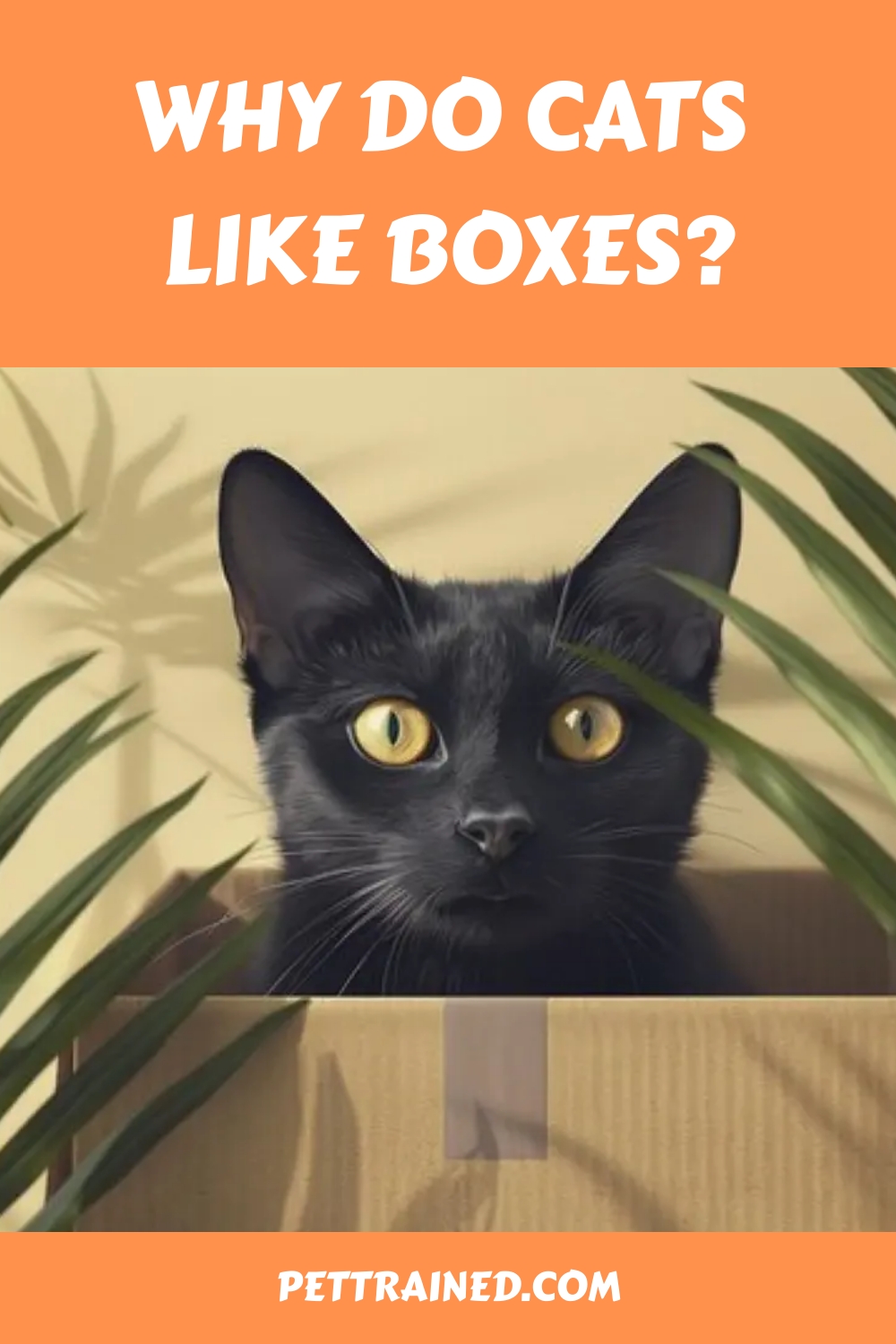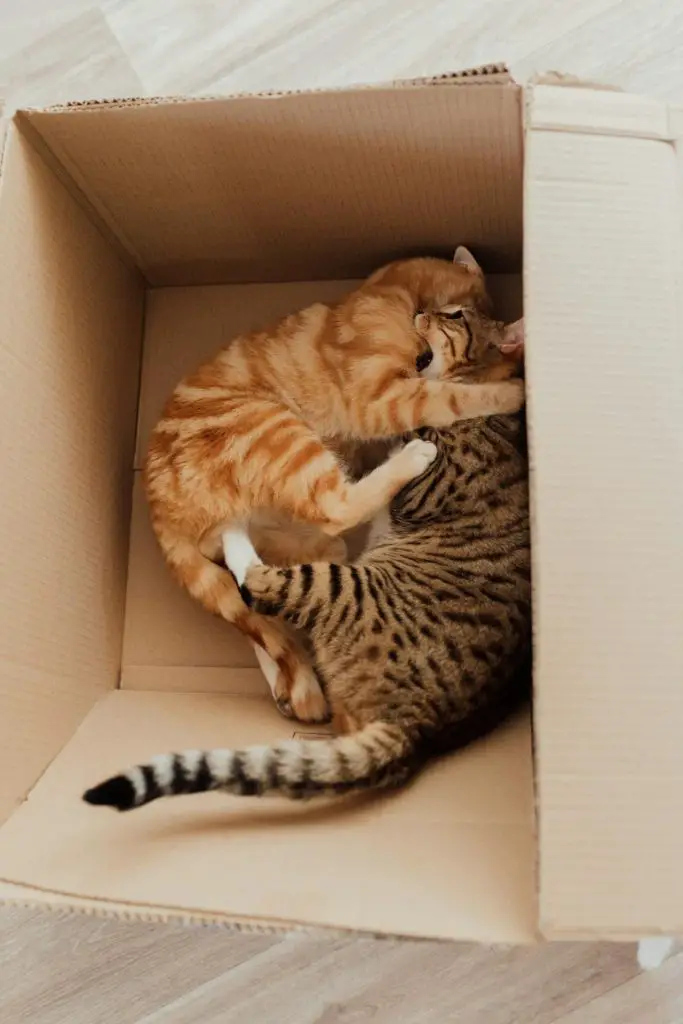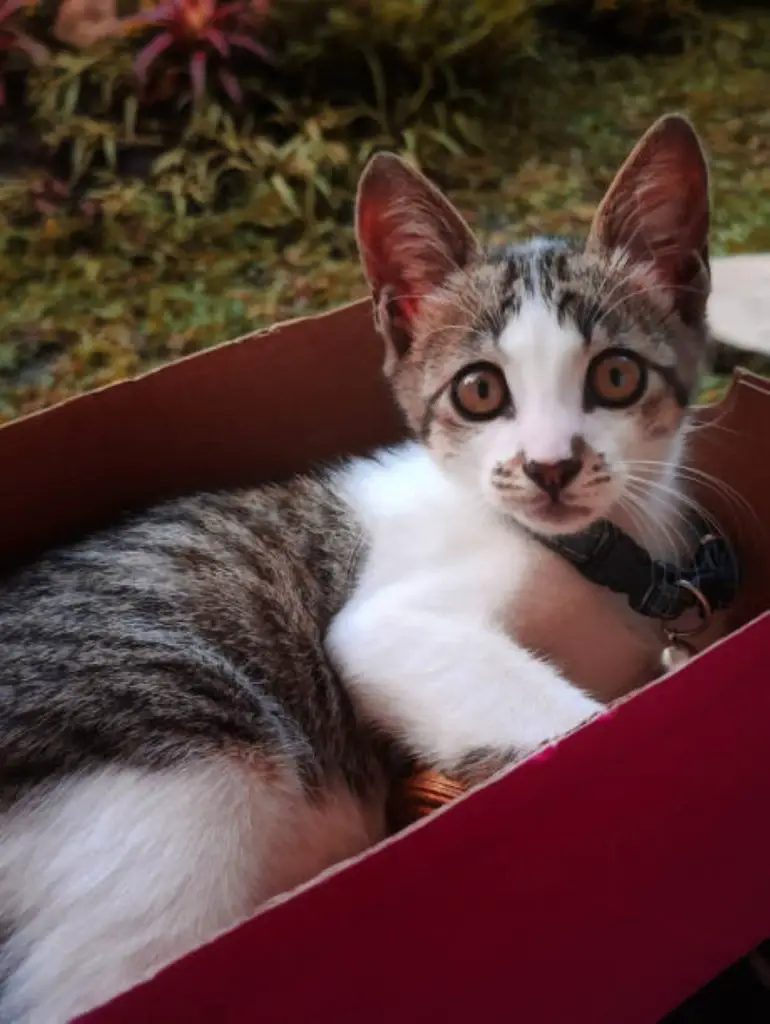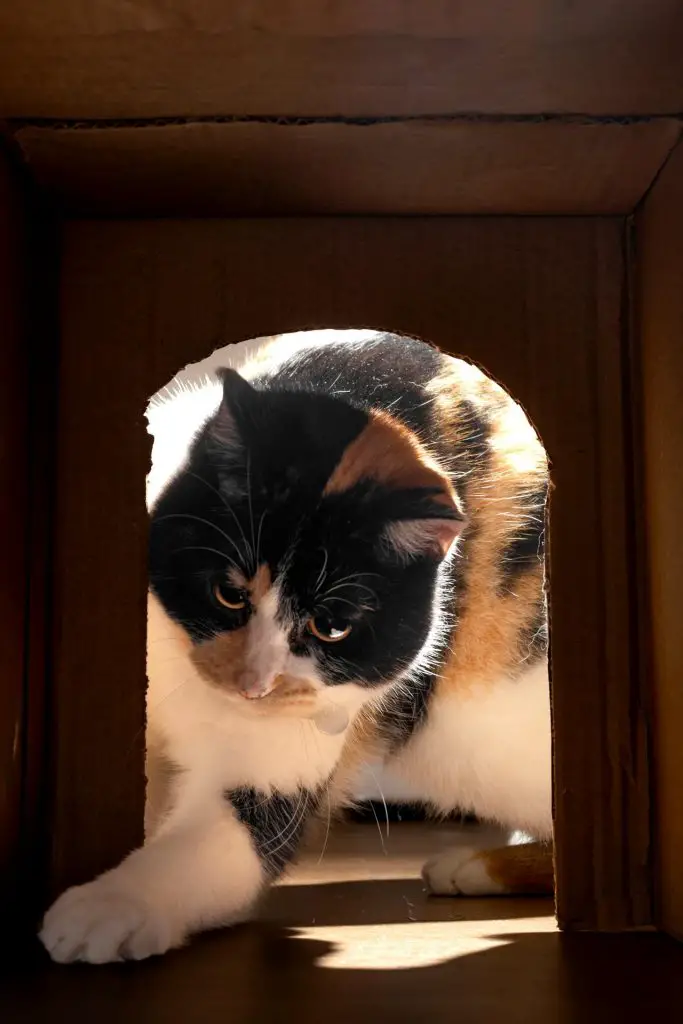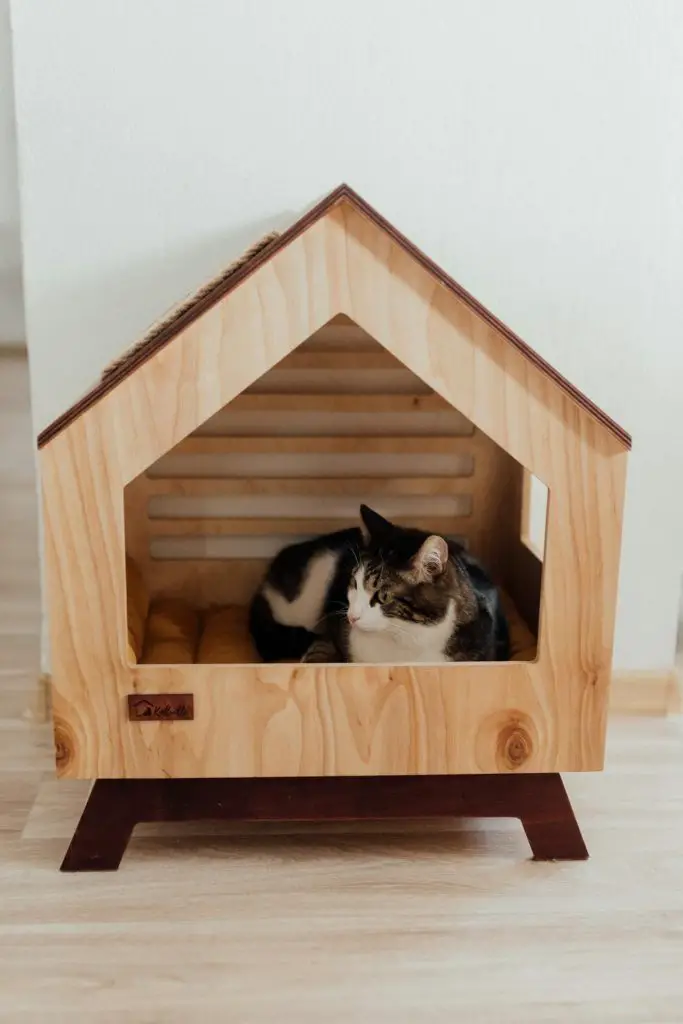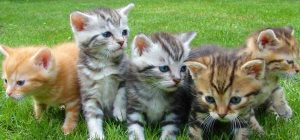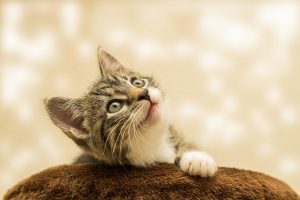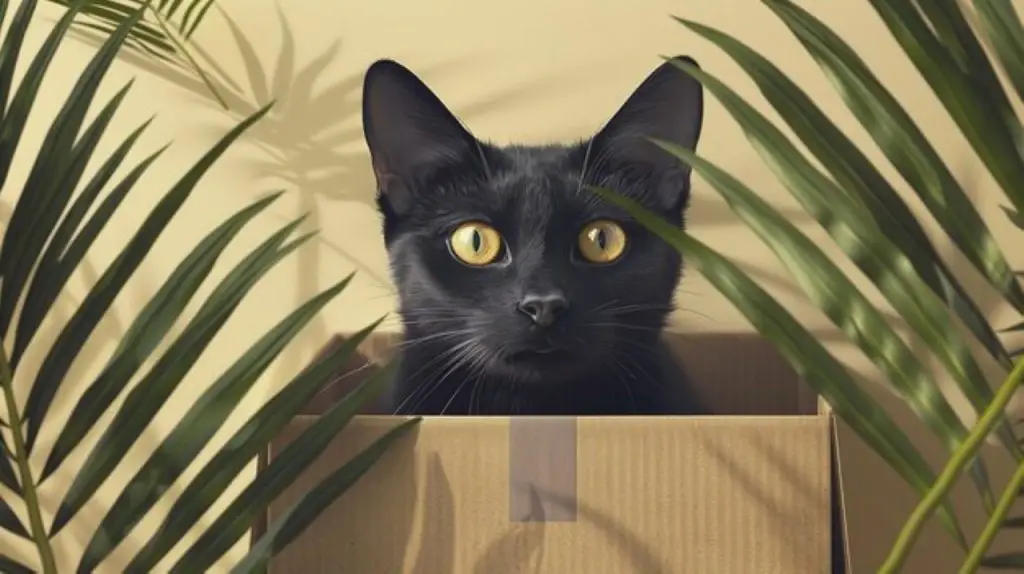
You notice your cat curling up in boxes, containers, and even small enclosures, and you wonder, what’s behind this fascination? Are they seeking safety and security, or is it something more? As you observe your feline friend, you start to see patterns – they use boxes to stalk, hide, and even play. Their behavior is both intriguing and puzzling. While it’s tempting to dismiss this quirk as simply cute or amusing, there may be more to it. Let’s explore the possibilities, and you might discover that your cat’s love for boxes reveals more about their nature than you expect.
Table of Contents
Safety and Security in Boxes
Most cat owners have observed that their feline companions often retreat to boxes or other enclosed spaces, suggesting that these areas provide them with a sense of safety and security.
As you ponder this phenomenon, you’ll realize that boxed environments seem to tap into your cat’s feline instincts. These enclosed spaces may remind them of the womb or a cozy den, where they feel protected from predators and external threats.
When your cat curls up in a box, they’re likely seeking a sense of containment and comfort. The box provides a clear boundary, separating them from the outside world and creating a sense of seclusion.
Your cat may also appreciate the tactile sensation of being surrounded by solid walls, which can be calming and reassuring.
This post contains affiliate links. However all the information provided on this site are my own honest opinions. See more in Disclaimer.
Scientists believe that this behavior is an expression of your cat’s natural instincts, which drive them to seek shelter and security in confined spaces.
Instinctual Behavior and Hiding Spots
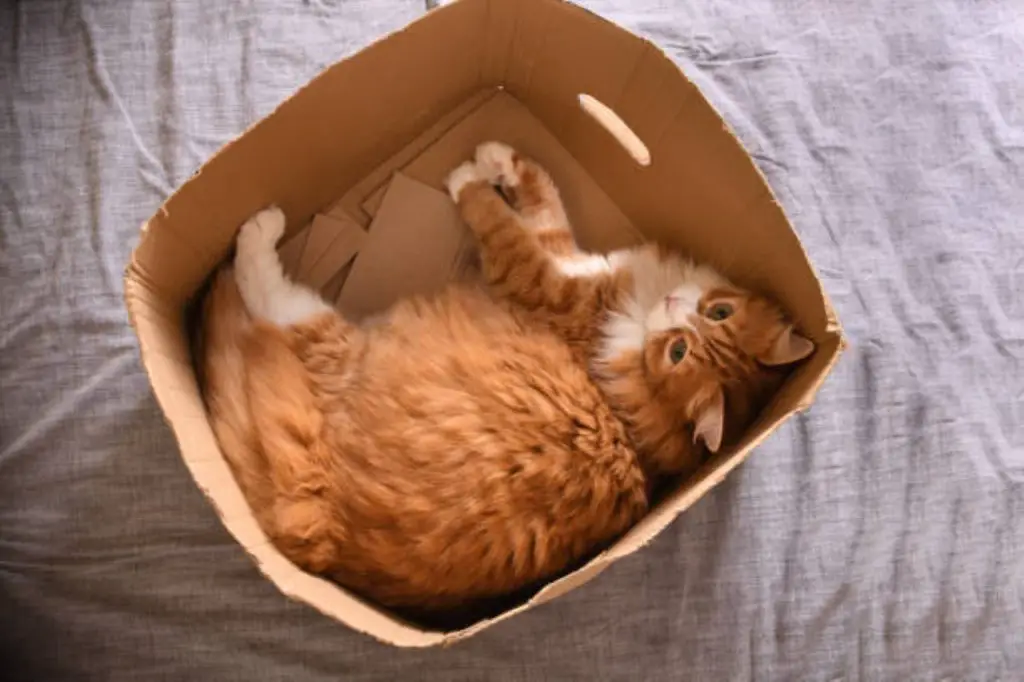
Observing your cat’s affinity for boxes and enclosed spaces reveals a fascinating aspect of their behavior, as hiding and seeking shelter are instinctual actions that have been honed over thousands of years of feline evolution.
You’ll notice that your cat often exhibits behaviors like stalking, pouncing, and hiding, which are all manifestations of their feline instincts.
These instincts have been shaped by their ancestors’ need to hunt and avoid predators, making hiding and seeking shelter essential for survival.
| Feline Instincts | Evolutionary Adaptation | Behavioral Expression |
|---|---|---|
| Hunting and predation | Stalking, ambushing, and killing prey | Pouncing on toys, chasing small animals |
| Predator avoidance | Hiding, seeking shelter, and remaining still | Hiding in boxes, remaining silent and still |
| Territorial marking | Marking territory with scent and scratches | Rubbing against surfaces, scratching furniture |
Temperature Regulation and Comfort
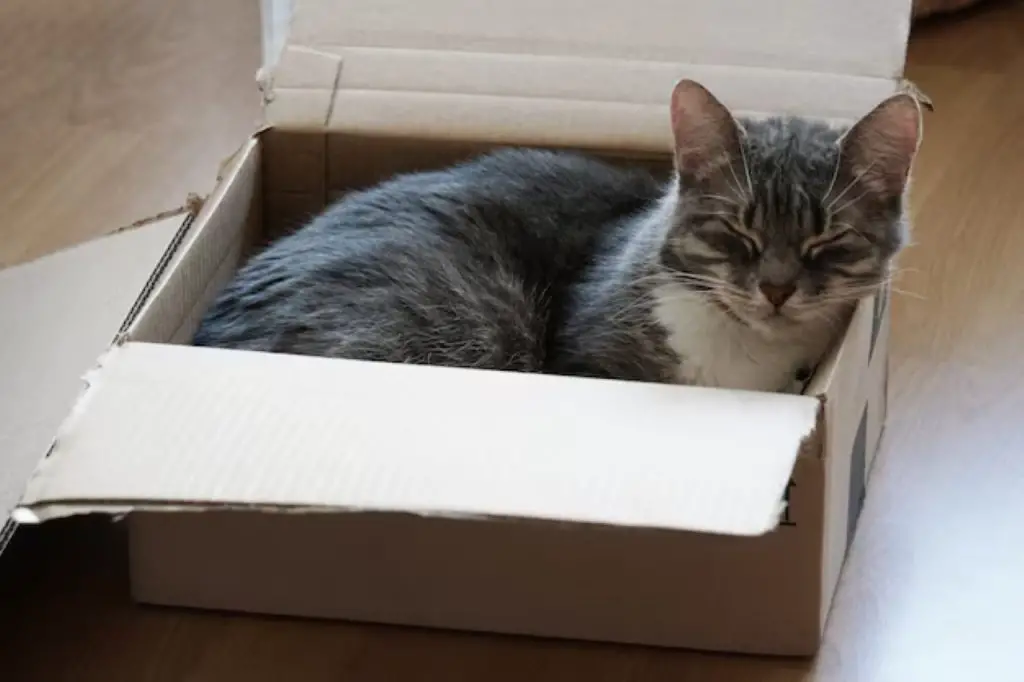
Your cat’s affinity for boxes may also be driven by a desire for ideal temperature regulation and comfort, as these enclosed spaces can provide a cozy, sheltered environment that helps to conserve body heat.
You see, cats are highly sensitive to temperature extremes, and they often seek out areas that offer thermal insulation.
Boxes, with their enclosed walls and sometimes even flaps or lids, can provide just that – a warm, draft-free space that shields your cat from the outside environment.
As your cat curls up in a box, it’s fundamentally creating a cozy refuge that allows it to maintain a stable body temperature.
This is especially important for cats, as they spend a significant amount of time sleeping or resting. By regulating their body temperature, your cat can conserve energy and guarantee that its bodily functions operate efficiently.
Reducing Stress and Anxiety Levels
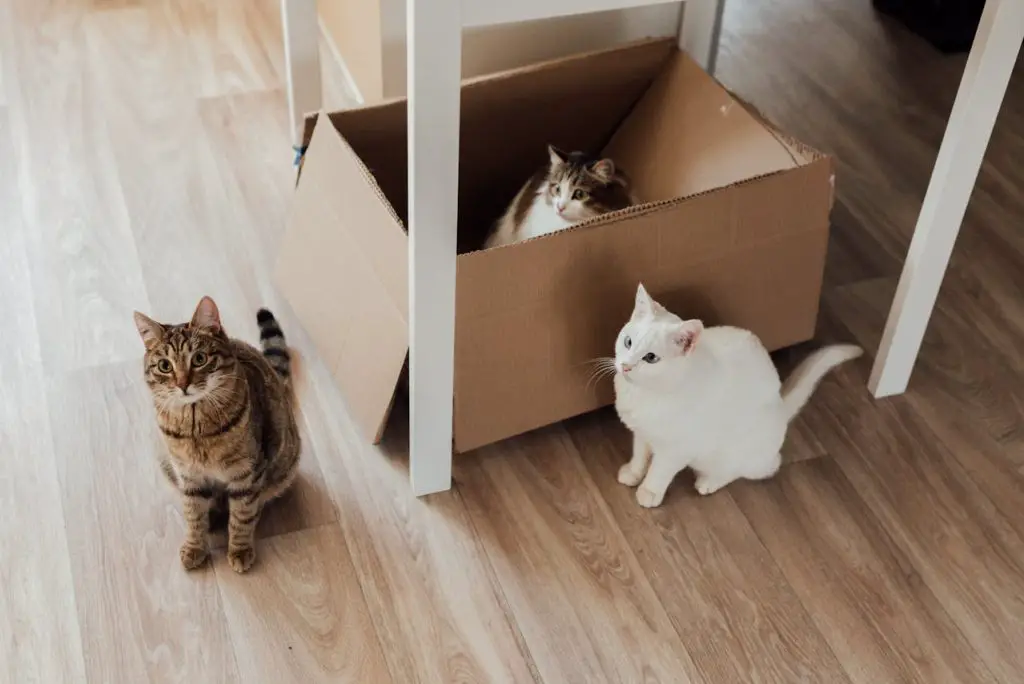
You may have noticed that your cat often retreats to a box when feeling stressed or anxious.
By providing a secure and enclosed space, boxes help to reduce your cat’s exposure to environmental noise and stressors, allowing them to feel more calm and relaxed.
As you explore the relationship between cats and boxes, you’ll discover that your cat’s instinct to seek seclusion in a box is a coping mechanism that helps them regulate their stress and anxiety levels.
Boxes Provide Secure Spaces
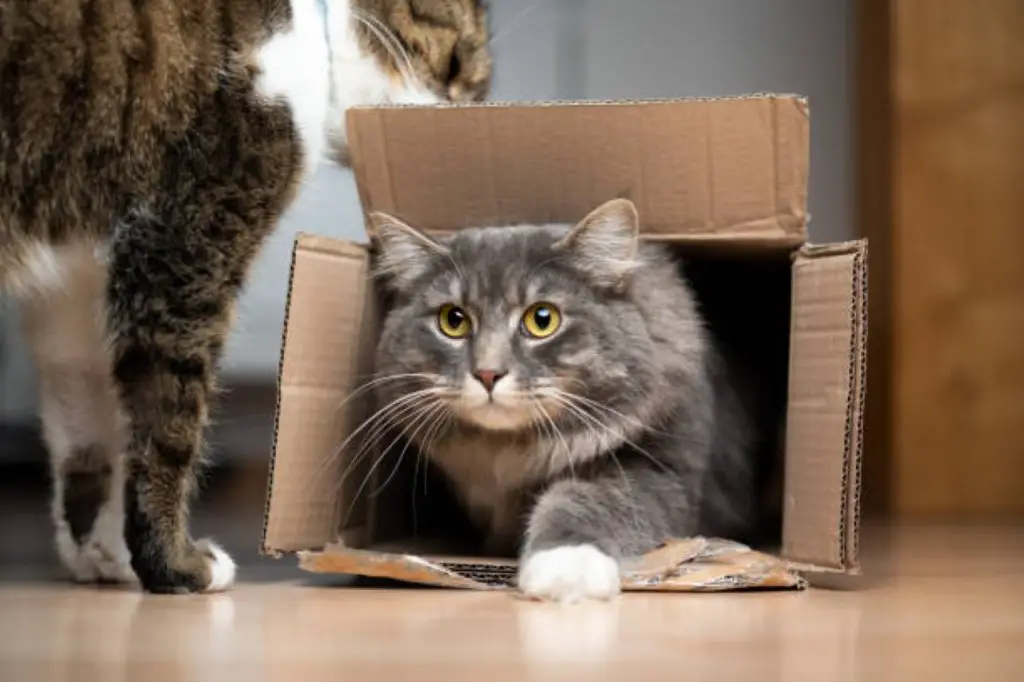
Because enclosed spaces allow them to retreat from their surroundings, cats often view boxes as secure areas that reduce stress and anxiety levels.
When you provide your cat with a box, you’re giving them a sense of control and security. They can choose to enter the box, where they’ll feel protected from potential threats.
The type of box you provide can also impact your cat’s sense of security. Different box materials and shapes can affect your cat’s preference for the box.
For example, a cardboard box with a small entrance may be more appealing to your cat than a large, open box made of plastic.
Here’s a summary of how different box characteristics can impact your cat’s sense of security:
| Box Characteristic | Effect on Cat’s Sense of Security | Explanation |
|---|---|---|
| Small entrance | Increases sense of security | Allows cat to feel more protected |
| Cardboard material | Increases sense of security | Provides a cozy, natural environment |
| Rectangular shape | Increases sense of security | Allows cat to feel more enclosed and protected |
Lowering Environmental Noise
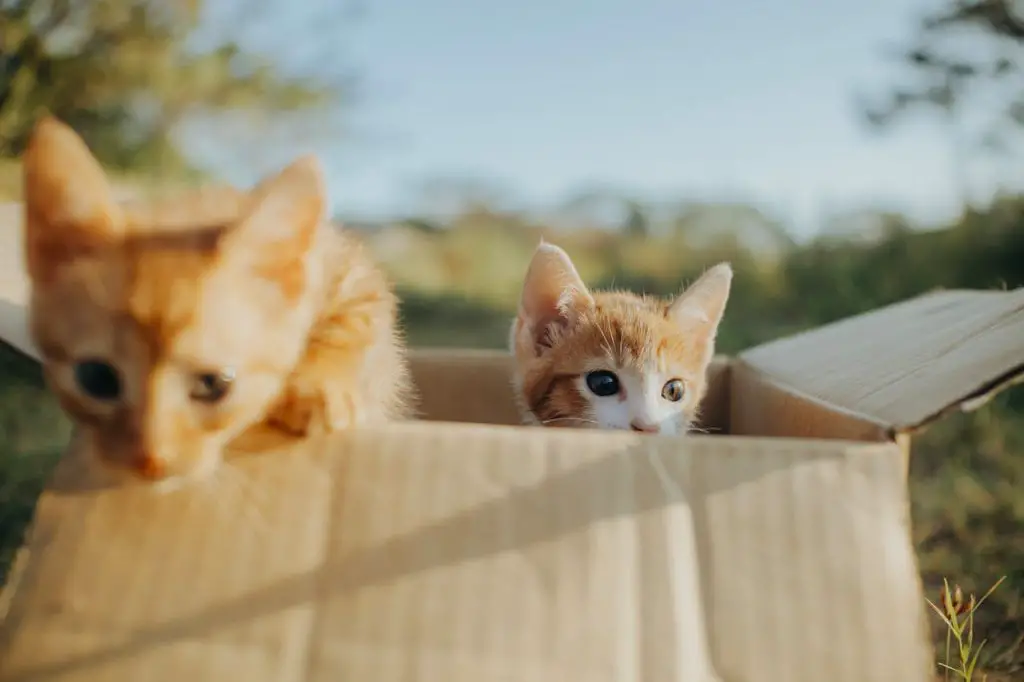
Environmental noise can be a significant source of stress and anxiety for cats, and boxes provide a refuge that reduces exposure to unwanted sounds.
When you place a box in a noisy area, you’ll notice your cat is drawn to it, seeking to escape the constant barrage of auditory stimuli.
By entering the box, your cat gains a measure of acoustic insulation, shielding their sensitive ears from the environment’s cacophony.
As your cat settles into the box, they experience a reduction in stress and anxiety levels.
This response is due in part to sensory adaptation, where the cat’s nervous system is no longer bombarded by a multitude of stimuli, allowing their senses to recalibrate.
The relative quiet within the box enables your cat to relax and unwind, which is essential for maintaining their overall well-being.
By providing your cat with a box, you’re offering a simple yet effective means of mitigating the negative impacts of environmental noise, creating a more peaceful and calming environment for them to thrive in.
Cats Seek Seclusion Zones
Many cats exhibit a natural inclination to seek out and occupy enclosed or secluded areas, which serve as zones of solitude and relaxation, thereby helping to mitigate their stress and anxiety levels.
As you observe your feline friend engaging in box exploration, you’ll notice that they often prefer areas with minimal stimulation and noise. This behavior isn’t unique to boxes; any confined space can serve as a seclusion zone for your cat.
From a scientific perspective, it’s important to recognize the factors contributing to this feline behavior:
- Instinctual inheritance: In the wild, cats use enclosed spaces to hide, stalk, and protect themselves from predators or prey.
- Reducing sensory overload: Cats can become overwhelmed by their environment, and seclusion zones provide a refuge from noise, smells, and visual stimuli.
Sense of Control and Territory
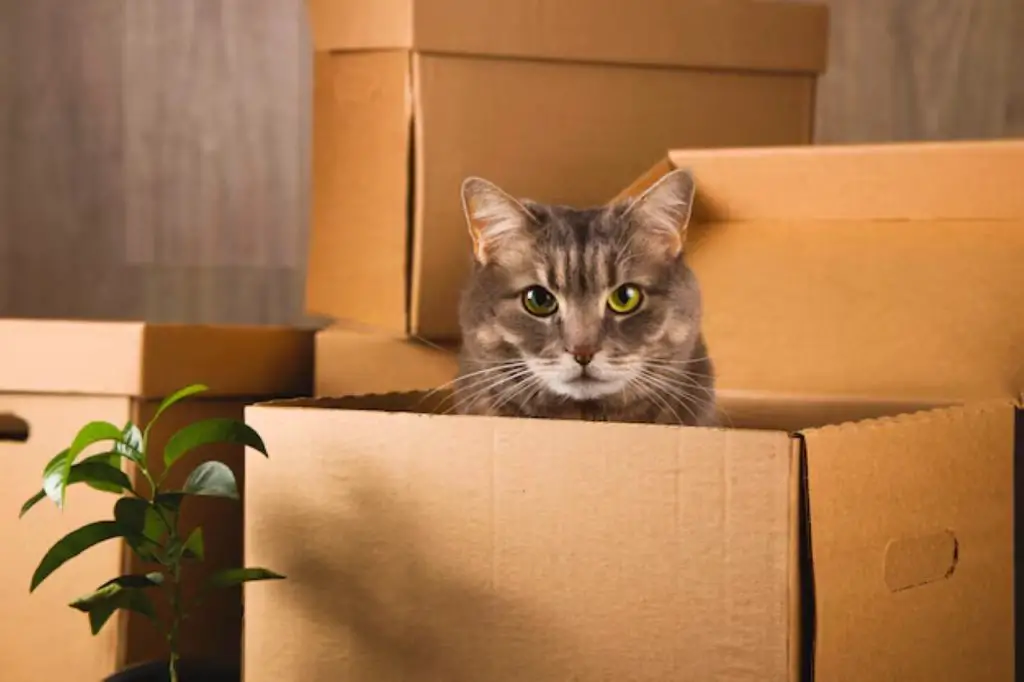
Upon entering a box, your cat asserts control over its surroundings, establishing a sense of territory that may be a key factor in its affinity for enclosed spaces.
By doing so, your cat exercises its territorial instincts, which are essential for its survival and well-being. This behavior allows your cat to claim ownership of the space and regulate its environment.
| Territorial Behavior | Control Preferences | Box Characteristics |
|---|---|---|
| Marking with scent | Regulating access | Enclosed space |
| Claiming ownership | Hiding and seeking | Secure boundaries |
| Establishing routines | Regulating sensory input | Compact space |
| Defending boundaries | Reducing stress | Low visibility |
| Maintaining dominance | Increasing comfort | Textured surfaces |
As illustrated in the table above, your cat’s desire for control and territoriality is closely linked to its preference for boxes. By entering a box, your cat is able to regulate its environment and exercise control over its surroundings.
This behavior is an expression of your cat’s territorial instincts and highlights the significance of control preferences in its affinity for enclosed spaces.
Cueing Prey Drive and Play
Inside a box, your cat’s prey drive is triggered by the enclosed space, which simulates the stalking and ambushing scenarios that occur in the wild, allowing it to engage in natural hunting behaviors.
This enclosed space allows your cat to express its hunting instincts, which are essential for its physical and mental well-being. As your cat plays in the box, it’s exhibiting play behavior, which is a natural expression of its hunting instincts.
Some key aspects of a box that stimulate your cat’s prey drive include:
- The box’s edges and corners, which provide a focal point for stalking and pouncing.
- The box’s enclosed space, which creates a sense of security and allows your cat to ambush its ‘prey.’
Physical Touch and Spatial Awareness
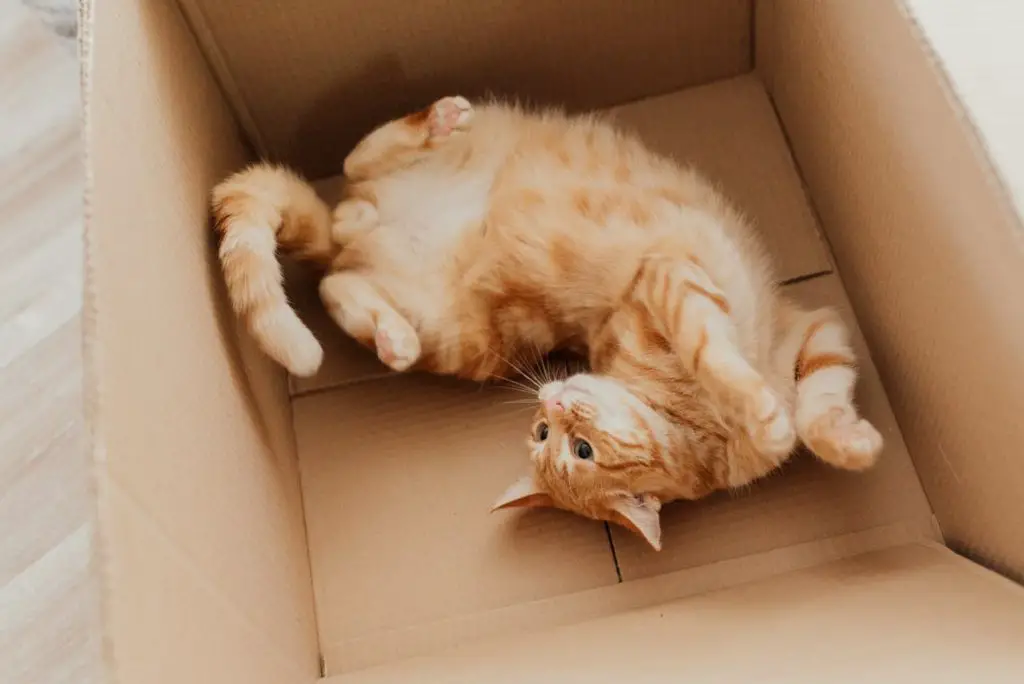
As your cat navigates the enclosed space of a box, it also engages its sense of spatial awareness and experiences physical touch from the box’s surfaces. This provides a unique combination of sensory inputs that stimulate its behavior.
You’ll notice that your cat’s body language changes as it explores the box – its ears perk up, and its whiskers twitch as it uses them to detect even the slightest changes in air pressure.
This sensory exploration allows your cat to build a mental map of its surroundings, which is vital for its sense of spatial awareness.
The physical touch your cat experiences from the box’s surfaces also plays a significant role in its behavior. The pressure from the box’s walls and floor provides a sense of security and comfort, which can be calming for your cat.
Additionally, the tactile stimulation from the box’s surfaces can stimulate your cat’s sensory receptors, leading to a range of behaviors, including scratching, rubbing, and even sleeping.
Frequent Questions
You’ll notice cats prefer boxes with specific dimensions, often choosing those that match their body length and width. Research shows box dimensions greatly influence cat preferences, suggesting an ideal box size may exist for feline comfort.
You’re maneuvering a sea of cardboard, wondering if your cat’s box attachment is a lifeline or a liability. Research suggests that excessive box attachment can be a symptom of feline anxiety, warranting closer examination of your cat’s behavior.
You’ll notice that boxes can serve as substitutes for cat beds and toys, but they also offer unique benefits. Boxes provide comfort zones, allowing cats to retreat and feel secure, unlike some box alternatives that lack enclosure.
You should consider providing multiple boxes in a multi-cat household to avoid territory issues, as cats may exhibit stress and aggression when competing for a single box, while box sharing can also occur among familiar cats.
You can reduce destructive behavior in cats by providing boxes as a form of environmental enrichment, allowing them to exercise natural instincts and engage in exploratory behavior, redirecting energy away from destructive activities.
Final Thoughts
Why Do Cats Like Boxes
As you explore the feline fascination with boxes, it becomes clear that these humble containers are a ‘security blanket‘ for cats, wrapping them in a sense of safety, comfort, and control.
Boxes tap into their instinctual needs, stimulating hunting instincts, regulating body temperature, and reducing stress.
By providing a cozy haven, boxes support a cat’s overall well-being, proving that sometimes, the simplest things in life can be the most profound.
